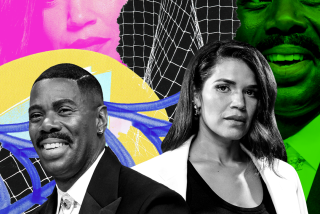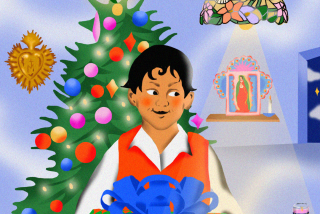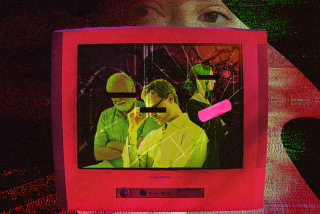âWe can rid ourselves of fear and stereotypes.â
My life so far has been fairly sheltered. I donât know how many people in Camarillo are Caucasian, how many are Latino or how many are other races. I do know that growing up in Camarillo, most of the friends I have made are just like me: white.
Why? I didnât consciously seek out others with the same ethnic background; I donât think many of my peers did either. Yet from kindergarten through high school, most of the cliques that were formed contained people of the same race. Do we consciously exclude those who donât look like us? Do we feel more comfortable with others who understand our own particular culture? Or do we simply fall into the slots assigned to us before we were born--stereotypes so common they are barely questioned anymore?
I donât believe everyone in my town is racist. So why do so many of us shy away from those who look different? Why do we assume that Asian Americans will excel in academics while African Americans will struggle? Why do we assume that Caucasians will be snobs and Latinos will be gang members? These assumptions are untrue and dangerous and are passed down from generation to generation.
They are caused by one thing: fear of the unknown. By stereotyping, we turn an unfamiliar face into a familiar one. Because we donât understand the cultures and background of other races, we are intimidated by them. To quell this intimidation, we make generalized assumptions that we believe will keep us safe. Because we now âknowâ how people of another background operate, we can predict their behavior and donât have to be scared by what we donât know.
These are dangerous thoughts. Claude Steele of Stanford University did a study on standardized testing that showed that when subjects believed they were being compared to others of a different race or gender, the subjects typically viewed as âlesserâ performed more poorly on the test. When the subjects were told that their results were not to be compared to anyone elseâs, the results improved significantly. Although this was a study of testing, it demonstrates that when people of a particular race or gender believe they are looked down upon, that belief is reflected in their attitudes. We as a society must realize that by isolating ourselves into race- and gender-specific groups and making assumptions about other, different people, we are affecting those peopleâs attitudes about themselves.
The way to get rid of these stereotypical assumptions is to integrate people of all races. If we make friends of people who are different and learn about their lives and their backgrounds, we donât have to be scared. We donât have to assume.
In the next 40 years, most of Ventura Countyâs population will be Latino. This is a wonderful opportunity for our countyâs non-Latino residents to learn more about the Latino culture, and for all county residents to break out of stereotypes.
In many ways, the future looks bright for the Latino community. More are buying homes, starting businesses and becoming involved in the community, through city councils and local school boards. However, there are still obstacles to overcome for the families who live in poverty and teenagers who drop out of school.
We can rid ourselves of unneeded fear and unwanted stereotypes. The result will be a community in which people of every background are living up to their full potential; where people of every race are happy, healthy, and stable; and where we all understand each other a little bit better.


